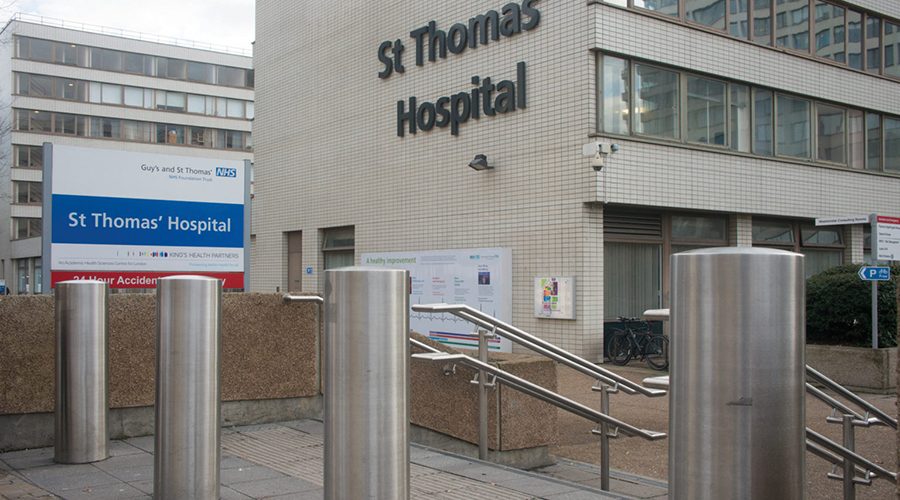Iain Moran, Director at ATG Access, a leading innovator of road blockers, bollards and barriers, explores the ways in which new technology is helping to solve the common issues that arise when retrofitting physical security measures.
ATG Access
The UK faces a serious and challenging threat from international terrorism and since 2017 the national threat level has remained ‘severe’, meaning an attack is highly likely. As we have seen in the UK and across Europe, attacks can happen at any time and any place without warning.
However, with attackers usually wanting to inflict as much harm as possible, the most likely targets are crowded places and critical national infrastructure. With hospitals falling under both of these categories, it is absolutely vital that they are protected as effectively as possible from terrorism in all its forms.
Over the past decade, we have particularly seen a rise in hostile vehicle attacks, in which vehicles themselves are used to breach a perimeter, ram and damage infrastructure, or as a weapon to injure and kill people. These attacks require little skill to perpetrate and have the potential to cause significant casualties and extensive damage to property.
With even heavy goods vehicles relatively easy to get hold of, they are one of the most powerful weapons readily available in countries that have strict gun laws. For these reasons, online terrorist propaganda often attempts to inspire disillusioned individuals.
As a result, these attacks are particularly dangerous as they are often carried out by ‘lone wolves’ and can therefore be very hard to predict. Fortunately, while they are hard to predict, they are possible to prevent.
Hostile vehicle mitigation
Threats from vehicles can be very effectively mitigated with the installation of carefully considered physical security products, such as bollards and barriers, around the perimeters of potential targets. To ensure optimum levels of protection, any products installed should be fully impact-tested to the appropriate standard – in the UK either PAS 68 or IWA 14.
These ratings cover a wide range of products, so factors such as the possible size of an attacking vehicle, and the speed it could potentially travel at, are usually taken into consideration to decide which product is best suited to a particular location.
Thanks to their effectiveness, crash-tested security solutions are now incorporated into the plans of many new public sector building projects, including hospitals. However, it can prove difficult to retrofit impact-tested security solutions to existing hospitals without causing severe disruption to both patients and staff.
This is because bollards capable of stopping a heavy vehicle travelling at speed have typically required deep foundations, which means the installation process is lengthy and intrusive. Deploying security measures in multiple phases can help to lessen the disturbance, but also leaves much of the hospital still vulnerable to attack while the installation takes place over a period of weeks or months.
Additionally, while security should undoubtedly be a priority, obtrusive security measures can inadvertently create a fortress mentality, putting people on edge. This is particularly unhelpful in a hospital setting, where the goal should be to foster a peaceful, welcoming environment as much as possible.
The good news is, perimeter security technology has improved significantly in recent years, and there are now a variety of very effective options available that can overcome these challenges.
Shallow-mount solutions
The below-ground foundation depths of traditional hostile vehicle mitigation equipment can be as much as 1000mm. Reaching these depths requires an extensive amount of excavation work, carried out by a large team of workers using heavy machinery.
Shallow-mount bollards can now provide an excellent alternative to traditional fixed bollards, with products on the market that require foundation depths of as little as 112mm, and can withstand a 7500kg vehicle travelling at 64kph (40mph).
As a result, they are much quicker and easier to install, and can be deployed in a matter of days with minimal disruption to important hospital activity. As an added benefit, this also means the cost of the installation is significantly less.
Temporary technology
Temporary bollards and barriers are another option to bear in mind, with surface-mounted barriers now available that are capable of stopping a 7200kg vehicle travelling at 32kph. Products like these can provide effective, immediate protection, either while a more long-term approach is being planned, or while shallow-mount or full-depth solutions are being installed.
Subtle street furniture
A pleasant, welcoming atmosphere can make a big difference to patient and staff wellbeing. For this reason, it may be beneficial to avoid large numbers of visible bollards and barriers creating an obvious protective perimeter around hospitals.
Instead, hostile vehicle mitigation products can now be incorporated into street furniture items, such as stair handrails, lighting columns, planters and even benches. These products subtly provide excellent protection against vehicle attacks, while also creating an attractive yet functional environment.
Thanks to recent advances in technology, there is no need for hospitals to be left vulnerable to hostile vehicle attacks. Effective, comprehensive, physical security systems can be installed with little disruption to patients and staff, that will not only provide effective protection against terrorist activity, but also other forms of criminality, such as theft, burglary and arson.









